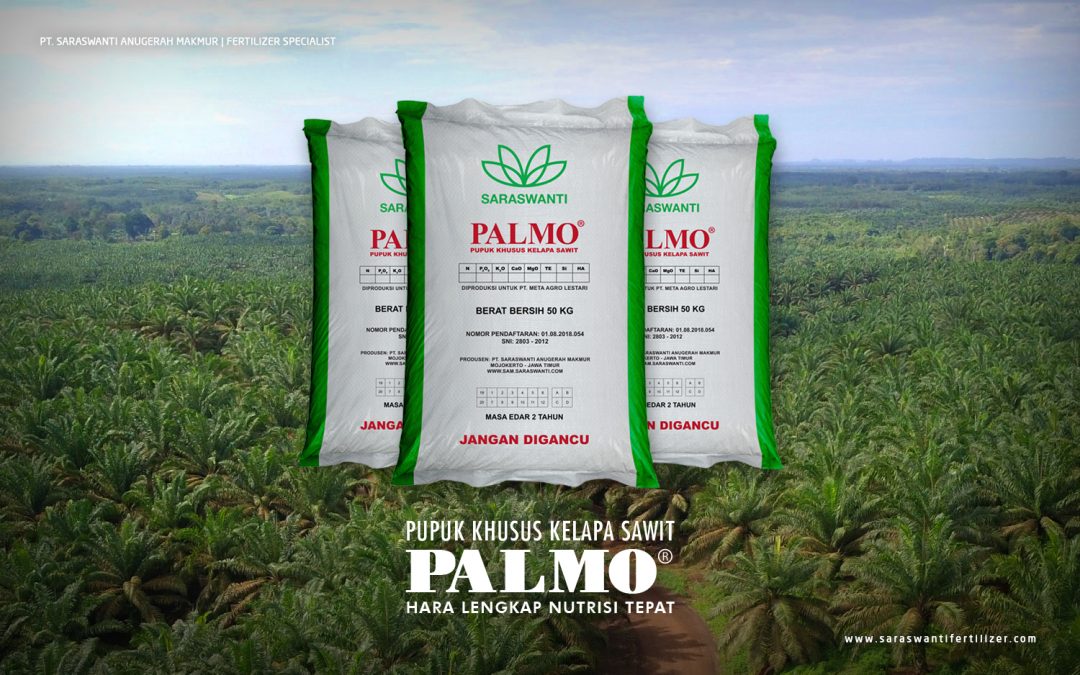Saraswanti Group innovation in producing briquette NPK fertilizer – commercialized under the name PALMO – deserves its recognition. Occasionally, CEO of Saraswanti Group Mr. Hari Hardono always shares the story of how Saraswanti Group innovation in development of NPK briquette leads to the company’s success. The NPK Briquette system is inspired by the Urea briquette system. Then, some trials and testing were conducted to produce NPK briquette fertilizer.
NPK Briquette fertilizer is well-known to be PT Saraswanti Anugerah Makmur’s product specialty, especially the fertilizer division. Briquette fertilizers are an advanced and finest solution to the fertilization efficiency problem for a while. NPK Briquette fertilizers are circulated on the market under the name PALMO.
The company’s official website stated that PALMO is specifically formulated according to the commodity requirements, consist of six macronutrients (N, P, K, Ca, Mg, S), and five micronutrients (Zn, Cu, Fe, B, Mn), Slow release agent (SRA), and humic substances. Currently the production capacity of the fertilizer has reached 200.00 tons/year. Palmo fertilizer weighs around 1,2 grams/grain. Palmo is an innovative product developed by PT. Saraswanti Anugerah Makmur in collaboration with Palm Oil Research Center (PPKS).
“Palmo are suitable for marginal land such as peat soil, sandy soil, and sloping land soil, due to the slow release agent therefore the nutrient loss is prevented. Stated by Saraswanti Group CEO.
Palmo’s innovation helps to preserve the Nutrients which easily release due to evaporation as ammonia (volatilisation), washed as nitrate (leaching). and evaporated as nitrogen dioxide (denitrification). Special modification formulated to prevent the rate of N release, and N dissolution balanced with the fertilizer nutrient dissolution (P and K).
Palmo compositions are formulated based on the soil and leaf research analysis which are customized to the palm oil requirements. Palmo enriched with humic and fulvic acid substances help to improve the soil structure and activate microorganisms (microflora and microfauna), therefore ensure the rhizosphere health and increase the root absorbance capacity








